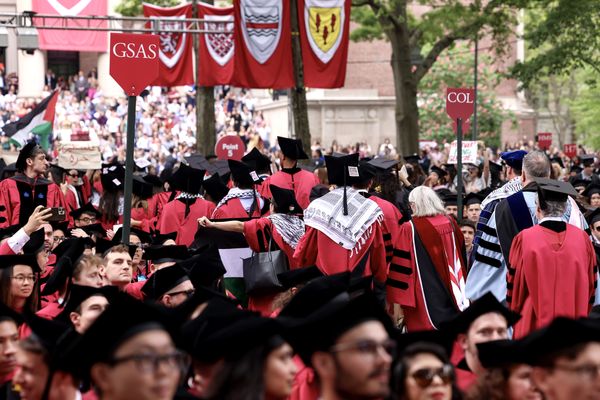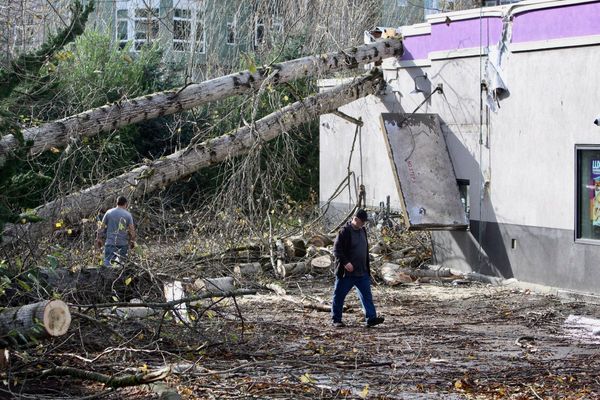
‘Why don’t the inglesi come here any more?” The question was asked by a customer at Caffè Roma in the seaside town of Alassio, whose pre-second world war British population could reach 5,000.
There are several reasons, I think. From the late 19th century, wealthy Britons would arrive in October to escape the winter cold, stay until May, and then head home before the torrid Italian summer. These days, British people with that kind of wealth probably winter between Zermatt and the Caribbean. But neither has Alassio great appeal to more ordinary Britons wanting a summer holiday: August temperatures can hit the high 30s, crowds and prices surge and, as in so many Italian resorts, the sands are taken over by beach concessions from Easter to September.
However, lovers of blue skies, warm sunshine, good food and outdoor pursuits may find this Ligurian resort a perfect spring or autumn destination. Just over an hour from Genoa (not much more from Nice), this lucky little town faces south-east over the Ligurian Sea, protected by a ring of hills on a shallow curve of silvery sand called Baia del Sole (Sunshine Bay). Alassio’s microclimate sees it consistently a few degrees warmer than its neighbours, with clear skies punctuated by a few spring showers.
A spring trip to Alassio could also take in Flauer (4-6 April in 2025), the town’s festival of cooking with flowers, this year with invited Sicilian chefs widening the offering of stalls, tastings and guided hikes. As a preview I nibble a few pinky-red begonia petals and am surprised at their zingy citrus taste – perfect in gelato.
Many Flauer events take place on Piazza dei Partigiani, which has the sea on one long side and is minutes from the town’s smart pier, Molo Bestoso, a setting for contemporary art exhibitions until late October. Inland are the narrow streets of the old town, called Il Budello (the gut), where the Old Alassio Association keeps photographs dating from before the British “discovered” it. An image taken in 1860 shows Alassio a mere fishing village, with just sheep and a few drying nets on the unspoilt sand.
The green hills above Alassio are a little more built up now, but still ripe for exploring. I hear all about them from lawyer Igor Colombi, who recently finished a project to maintain, waymark and map the 56 miles (90km) of former mule tracks leading into the hills. Armed with his map (available at the tourist office), I take the railway underpass off the main road to find the cobbled path to Solva. It winds up and up, views getting more spectacular with each hairpin, past gardens and allotments, under carob and olive trees, to the village square and a church with 14th-century frescoes designed to frighten the faithful into behaving.
There are no refreshments in Solva, but it’s only a half-hour walk back, with the track ending close to wonderful Osteria I Matetti (see below). At Solva’s July festival, hungry hikers can gorge on biscette, dough fritters similar to churros, and probably just as bad for you.
A longer trail leads from Alassio’s south-west edge to Moglio village, with its pretty multicoloured houses and views of the bay from a different angle. Moglio’s summer festival celebrates a less-appealing speciality: stewed tuna entrails. They are said to have a “decisive” taste. However, there is also Bar a Nió, with simple – intestine-free – snacks on a panoramic terrace.
For a deeper dive into Alassio’s hinterland, I consult a wise woman, Laura Brattel, who will be leading foraging walks (in English if required) during the Flauer festival. She learned about wild plants for food and healing from her mother and grandmother, but only after she’d promised, in a ceremony held when she was just five, not to use the knowledge to do harm. The lore can only be passed between women, so she is not allowed to share it with her only child, a son.
On a lung- and thigh-stretching walk to Vegliasco, a village with a 16th-century watchtower, she shows me wild celery, several types of dandelion and an edible bush with lush spinachy leaves. She shows me how to spot poisonous plants and explains how a herbal tea made from rosehips is a natural Prozac.
The strawberry tree’s leaves are good for stomach, bladder and circulatory problems, while the waxy leaves of caccialepre (Reichardia picroides) are good in salad or cooked in ravioli. Laura runs foraging walks year round, and offers bespoke bookings.
Back in town I take a look at what all the British left behind: a tennis club straight out of Agatha Christie, still thriving under eightysomething British owner Joe Skordis; the Anglican church, not so thriving; and the English Library, presided over on Wednesday and Friday afternoons by another long-term resident Brit, Jacqueline Rosadoni.
But for more of what today’s visitors might enjoy, I take to the water, meeting fisher Stefano Roascio at the town’s marina. He offers tours (from €30, ask at the tourist office) of the bay and Gallinara, the rocky island visible from all the mainland villages. The public can’t land there as yet, but in 2020 the authorities stepped in to stop a Russian oligarch buying it, and there are plans to open a museum and some Roman ruins as a tourist attraction. For now, it’s a handy shelter from chill breezes: Stefano anchors his boat, L’Orizzonte, in the island’s lee and even in low season it’s warm enough for a pre-lunch dip.
When not entertaining tourists, Stefano supplies fish to top restaurants, so knows what this coast can offer. We tuck into marinated anchovy antipasti, tartare of sea bream, amberjack sashimi and swordfish carpaccio, then cuttlefish salad and pasta with sea urchins, confit tomatoes and trombette, long, delicate, yellow courgettes.
After, I go to the Carlo Levi Gallery (Saturday, 3pm-6pm, free), having previously known the man only for his books and leftwing politics. He was a regular visitor to Alassio until his death in 1975, and his paintings include post-impressionist-feeling carob trees and expressive portraiture. There are also leaflets, posters and artefacts from his activist life.
A century ago, Alassio was all about mixed doubles, garden parties and new year balls for assorted upper-crust Dalrymples and Hanburys. Times have changed, but so has the town. The sun still shines in spring and autumn, and with scenic treks instead of tennis tournaments, seafood feasts instead of vicarage teas, Alassio could find the inglesi falling for it all over again.
Where to stay
On the edge of the old town, Casa d’Artista (doubles from €150 B&B) has sea views from the back and paintings by the owner’s mother, artist Maria Teresa Preve, everywhere, including the book-lined breakfast room.
For a splurge, Villa della Pergola (doubles from €310 B&B) has been owned by several wealthy British families and sits amid beautifully restored botanical gardens transformed by tennis club founder Daniel Hanbury in the 1920s. The garden has one of Italy’s biggest collections of wisteria, and spring sees a “waterfall” of them in full glory.
Where to eat
Osteria I Matetti looks unassuming, but inside you are hit by a loud hum of happy patrons. The walls are lined with old school photos: every local over a certain age can find themselves somewhere. Young staff dash about handing plates of pasta to office workers. Pesto comes with gasse, large flat pasta tubes, though I am also tempted by green tagliolini with bottarga. Booking is essential, but be aware that it is the local HQ for Inter Milan fans, who watch on a big screen unrolled from the ceiling on match days.
Balzola, the town’s opulent bakery and cafe, does crepes and gelato as well as baci di alassio, signature hazelnut biscuits sandwiched with chocolate cream. Nove is the Michelin-starred restaurant of Villa della Pergola. A glorious vegan menu offers pasta with peanut, broccoli and chinotto foam, green gazpacho over tomatoes cooked at just 63C, and sweet delicate trombette with truffles.
A mostly plant-based lunch at La Vigna, in hills north of town, can mean organic wine from their own nearby vineyard, starters of hot panissa – chickpea-flour fritters with lemon – and fresh fried porcini, then a main of pinzimonio – olive oil dip with pesto and anchovy – with the region’s freshest veg: raw spring onions, fennel, chicory, carrot, celery and boiled waxy potatoes.
The trip was provided by the town of Alassio and Alassio Marina







